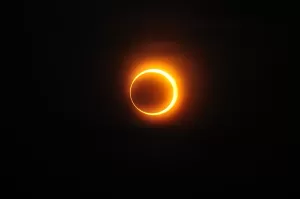A solar eclipse is a celestial event that enthusiasts and astronomers alike eagerly anticipate. It’s a moment when the moon passes between the Earth and the sun, casting a shadow over our planet and, for those in the path of totality, momentarily turning day into night. The experience of a solar eclipse is profound, invoking a sense of wonder and a rare opportunity for introspection and connection with the cosmos. But what happens when this eagerly awaited event is obscured by clouds?
The Eclipse Experience Amidst Clouds
Even on a cloudy day, the eclipse doesn’t lose its wonder. The ambient light will dim significantly as if the sun is controlled by a giant dimmer switch. This subtle yet profound change affects not just humans but wildlife too, with birds often quieting down and night-time insects momentarily starting their chorus. The temperature may drop noticeably, and the wind might pick up, making the environment feel eerie and surreal.
During totality, the light levels can drop so significantly that it resembles deep twilight, with stars becoming visible and the landscape bathed in a surreal, dim glow. This dramatic shift, often described as a 360-degree sunset, turns day into an eerie semblance of night, offering a brief, spellbinding glimpse into cosmic darkness.
Making the Most of a Cloudy Eclipse
-
Live Streams: Many astronomy organizations and space agencies stream live footage of solar eclipses. Watching a live stream can give you a clear view of the eclipse from locations with better weather conditions.
-
Photography Through Clouds: Cloudy skies can sometimes create unique photographic opportunities. If there are breaks in the clouds, you might capture stunning images of the partially obscured sun.
-
Experience the Environmental Changes: Pay attention to the changes in temperature, wildlife behavior, and light levels. These sensory experiences remain impactful, even without a direct view of the eclipse.
-
Connect with Community: Join local astronomy groups or online forums. These communities often share tips, experiences, and sometimes even set up live viewing events in different locations.
-
Prepare for Future Eclipses: Use the experience to plan for future eclipses. Research locations with historically better weather and consider traveling to witness the next event in clearer skies.
The Silver Lining
While a clear view of the sun is ideal, clouds can’t completely dampen the spirit of a solar eclipse. It remains a communal experience, reminding us of our place in the cosmos and the incredible phenomena that occur beyond our earthly concerns. A cloudy day might obscure the sun but it also offers a unique perspective on this astronomical event, highlighting the importance of adaptability and the beauty of finding joy in unexpected circumstances.






